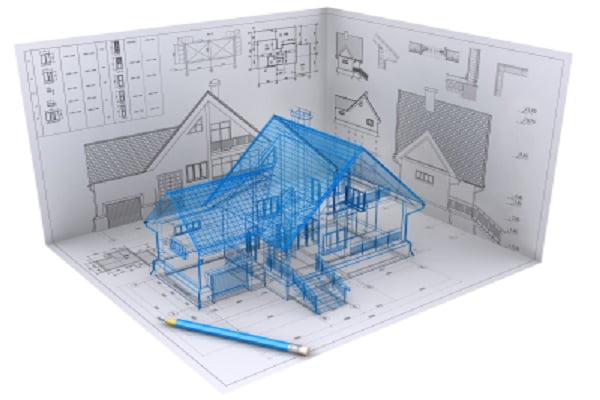
Introduction
In the rapidly evolving landscape of construction, Building Information Modeling (BIM) stands out as a transformative technology that enhances the efficiency, accuracy, and sustainability of construction projects. For Nigeria, a country experiencing rapid urbanization and infrastructural development, adopting BIM can significantly impact the construction industry, driving innovation and improving project outcomes. This article explores the significance of BIM in Nigerian construction, highlighting its benefits, challenges, and strategies for effective implementation.
The Significance of Building Information Modeling (BIM) in Nigerian Construction
1. Understanding BIM
– Overview:
Building Information Modeling (BIM) is a digital representation of the physical and functional characteristics of a building. It integrates various aspects of construction—design, construction, and operation—into a single, coherent model.
– Impact:
BIM enhances collaboration, improves project accuracy, and facilitates better decision-making throughout the building lifecycle.
2. The Need for BIM in Nigeria
– Urbanization and Infrastructure Development:
Nigeria is witnessing unprecedented urban growth and infrastructure development, necessitating advanced tools and technologies to manage complex projects effectively.
– Challenges:
Traditional construction methods in Nigeria often face challenges such as inefficiencies, cost overruns, and coordination issues. BIM offers solutions to these challenges by providing a comprehensive platform for project management.
Key Benefits of BIM in Nigerian Construction
1. Enhanced Collaboration and Communication
– Overview:
BIM facilitates improved collaboration among stakeholders by providing a centralized platform for sharing information and coordinating efforts.
– Impact:
Architects, engineers, contractors, and clients can access and contribute to the BIM model, reducing misunderstandings and ensuring that all parties are aligned with project goals and requirements.
2. Improved Project Accuracy and Precision
– Overview:
BIM enables precise modeling of building components, systems, and processes, reducing errors and discrepancies in design and construction.
– Impact:
Accurate models help prevent costly mistakes and rework, ensuring that the project adheres to the specified design and quality standards.
3. Efficient Project Management and Planning
– Overview:
BIM supports efficient project management by providing tools for planning, scheduling, and resource allocation.
– Impact:
The use of BIM helps streamline project workflows, optimize resource utilization, and improve overall project timelines.
4. Cost Savings and Budget Control
– Overview:
BIM’s ability to detect clashes and conflicts during the design phase helps avoid costly changes and delays during construction.
– Impact:
Early identification of issues and accurate cost estimation contribute to better budget control and cost savings throughout the project lifecycle.
5. Sustainability and Energy Efficiency
– Overview:
BIM supports sustainable design practices by allowing for the analysis of energy performance, materials, and environmental impact.
– Impact:
Optimizing energy efficiency and sustainability features through BIM can lead to reduced operational costs and a smaller environmental footprint.
Challenges of Implementing BIM in Nigeria
1. Limited Awareness and Expertise
– Overview:
Despite its benefits, BIM adoption in Nigeria faces challenges due to limited awareness and expertise among industry professionals.
– Impact:
The lack of knowledge and training in BIM technology can hinder effective implementation and utilization of BIM tools.
2. High Initial Costs
– Overview:
Implementing BIM requires investment in software, hardware, and training, which can be a barrier for some organizations.
– Impact:
The initial costs associated with BIM adoption may deter smaller firms and projects from embracing the technology.
3. Integration with Existing Systems
– Overview:
Integrating BIM with existing systems and processes can be complex, particularly in organizations that rely on traditional methods.
– Impact:
The transition to BIM may require adjustments to workflows, processes, and data management practices.
4. Resistance to Change
– Overview:
Resistance to change is a common challenge in adopting new technologies, including BIM.
– Impact:
Stakeholders who are accustomed to traditional methods may be reluctant to embrace BIM, affecting its widespread adoption.
Strategies for Effective BIM Implementation in Nigeria
1. Education and Training
– Overview:
Investing in education and training is crucial for building expertise in BIM technology and maximizing its benefits.
– Implementation:
- Training Programs: Offer training programs and workshops for architects, engineers, and construction professionals to build proficiency in BIM tools and techniques.
- Certification: Encourage certification in BIM-related skills to enhance credibility and expertise within the industry.
2. Investing in Technology and Infrastructure
– Overview:
Adequate investment in technology and infrastructure is essential for successful BIM implementation.
– Implementation:
- Software and Hardware: Invest in BIM software and compatible hardware to support effective modeling and analysis.
- IT Infrastructure: Ensure robust IT infrastructure to manage and store BIM data securely.
3. Fostering Collaboration and Industry Support
– Overview:
Collaboration among industry stakeholders and support from professional organizations can drive BIM adoption and standardization.
– Implementation:
- Industry Partnerships: Collaborate with industry associations and government bodies to promote BIM adoption and develop industry standards.
- Knowledge Sharing: Participate in industry forums, conferences, and seminars to share knowledge and best practices related to BIM.
4. Developing BIM Standards and Guidelines
– Overview:
Establishing clear BIM standards and guidelines helps ensure consistency and quality across projects.
– Implementation:
- Standardization: Develop and adopt BIM standards that align with international best practices and local requirements.
- Guidelines: Create guidelines for BIM implementation, data management, and project collaboration to streamline processes.
5. Gradual Integration and Pilot Projects
– Overview:
Gradual integration of BIM and pilot projects can help organizations transition smoothly and demonstrate the benefits of the technology.
– Implementation:
- Pilot Projects: Start with pilot projects to test BIM implementation and identify areas for improvement before scaling up.
- Incremental Adoption: Implement BIM in phases to manage the transition and address challenges progressively.
Case Studies: BIM in Nigerian Construction Projects
1. The Eko Tower Project
– Overview:
The Eko Tower Project in Lagos utilized BIM to manage the complexities of a high-rise development, including design coordination and clash detection.
– Outcome:
The project benefited from improved accuracy, efficient project management, and cost savings, demonstrating the value of BIM in large-scale developments.
2. The Abuja Light Rail Project
– Overview:
The Abuja Light Rail Project employed BIM for infrastructure design and coordination, enhancing the integration of various systems and components.
– Outcome:
BIM facilitated effective planning, reduced errors, and supported timely project delivery, showcasing its potential in transportation infrastructure.
Conclusion
Addressing Building Information Modeling (BIM) in Nigerian construction is essential for revolutionizing the industry and driving innovation. By understanding the benefits of BIM, overcoming implementation challenges, and adopting effective strategies, stakeholders can harness the power of BIM to enhance project outcomes, improve efficiency, and support sustainable development.
As Nigeria continues to advance its construction sector, embracing BIM technology will play a crucial role in shaping the future of urban development and infrastructure. Through education, investment, collaboration, and adherence to best practices, the Nigerian construction industry can leverage BIM to achieve greater accuracy, efficiency, and success in its projects.
Contact Us
For premier Understanding Building Information Modeling in Nigeria Construction Law, contact Chaman Law Firm today. Our offices are conveniently located in Lagos, FCT Abuja, Ogun State, and the UK. We are readily available to assist you with your legal needs. Whether you require consultation, representation, or ongoing legal support, Chaman Law Firm is your trusted partner in navigating Construction law in Nigeria.
Call us at 08065553671 or email us at info@chamanlawfirm.com to schedule a consultation.
- Construction Law
- Real Estate Law
- Building and Safety Codes
- Environmental Law
- Insurance Law
- Health and Safety Law
- Contractor and Subcontractor Law
Chaman Law Firm: Your Trusted Legal Partner in Construction Law
By choosing Chaman Law Firm, you are selecting a team of dedicated professionals committed to providing exceptional legal services tailored to your unique needs. Let us be your advocate and guide in the complex world of Construction law, ensuring your interests are protected and your goals are achieved.

